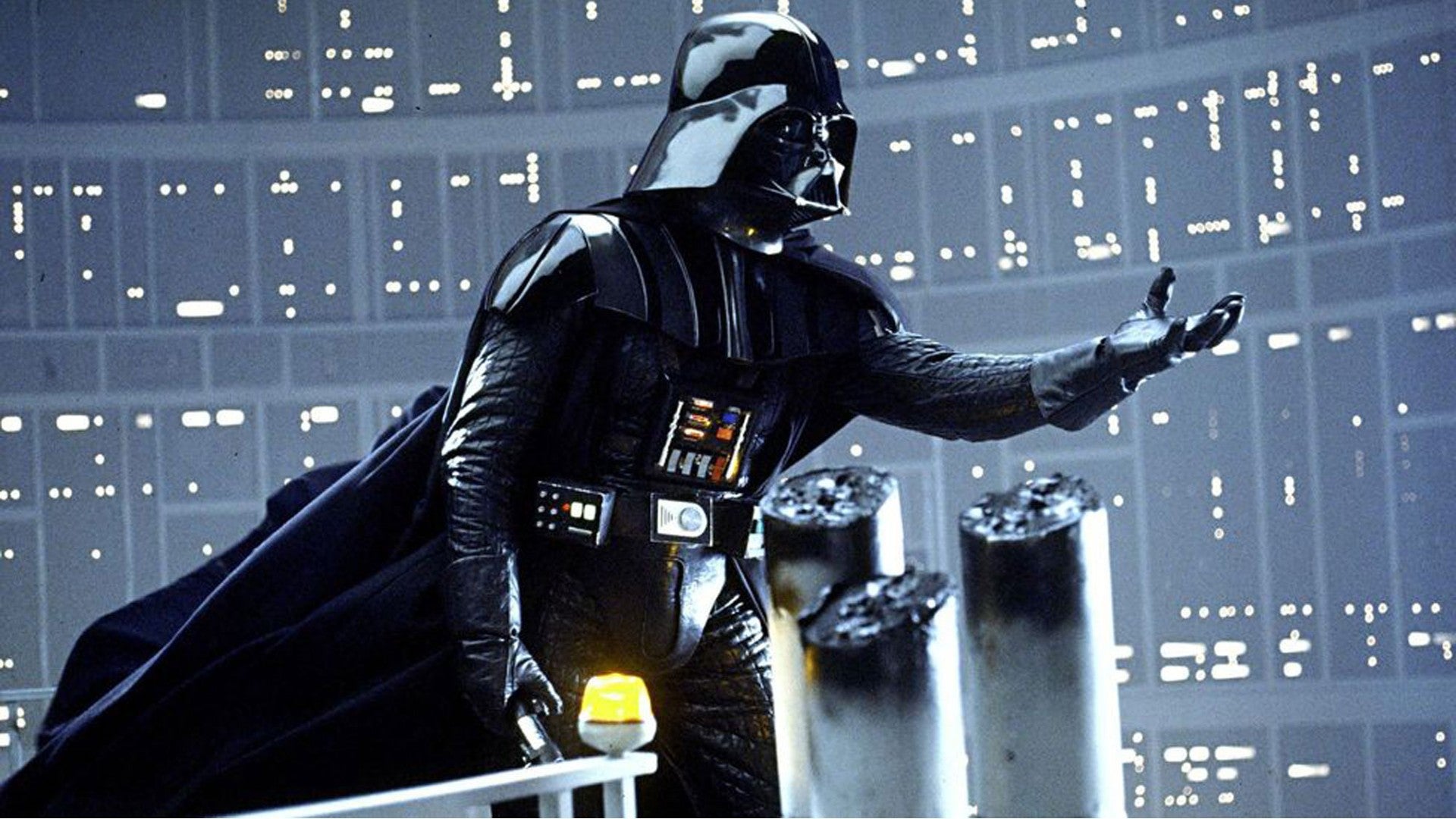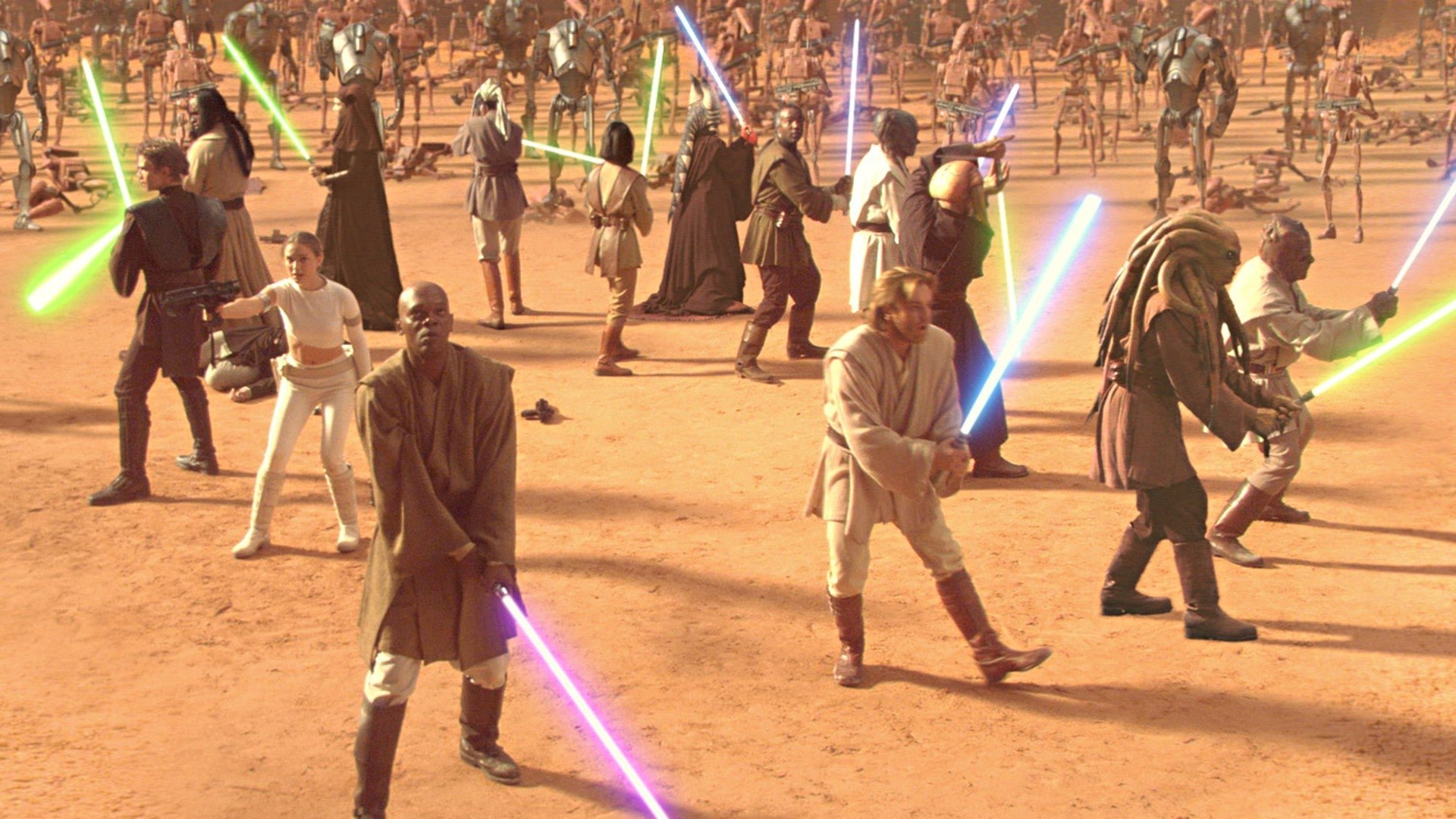If you click on a link and make a purchase we may receive a small commission. Read our editorial policy.
Disney+'s Andor features the first onscreen use of Star Wars' BBY/ABY timeline. Let's dive into that.
The first episode of Andor opens with the legend '5 BBY.' That's something we've never seen on screen in a Star Wars film or TV show before. What does it mean?

Star Wars: Andor breaks from what you might expect a Star Wars streaming series to be like at this point. It’s a show with different priorities: as a character study, as an illustration of a particular time and place in Star Wars’ galactic history, and as a different approach to how that story is told. Within the first minute of the first episode, Star Wars fans may notice one way in particular that the show breaks with tradition: by using a calendar dating system never used on screen before in a Star Wars film or television show.
The first time we see series protagonist Cassian Andor on screen in the pilot episode, he’s accompanied by on-screen code reading “5 BBY.” For the Padawans reading this, that’s not the name of a droid, or a space station. That’s a date. 'BBY' stands for 'Before the Battle of Yavin,' referring to the climactic battle over the moon of Yavin IV where Luke shoots a proton torpedo down the Death Star’s exhaust port in the original Star Wars film. Conversely, dates which occur after the end of the first Star Wars movie are labeled as 'ABY,' for 'After the Battle of Yavin.' These are terms mostly used in marketing materials, reference books, and by fans to refer to specific points in the Star Wars timeline for 30 years.
But as ubiquitous as this system is to Star Wars fans, a 'casual' viewer who’s 'merely' watched the 10-plus Star Wars movies and 9-odd Star Wars TV shows without consulting an encyclopedia would never have seen the term on screen before. So, how did this convention start in the first place? Is it really how the denizens of the Star Wars Galaxy keep time? And why, of all possible opportunities, show it on screen for the first time now?

The Origins of The BBY/ABY Calendar
The business of keeping track of when events occur in the expanded Star Wars timeline began in earnest with the Thrawn Trilogy, a series of novels written by Timothy Zahn and published by Bantam Spectra between 1991 and 1993. As the first earnest sequel to the original Star Wars trilogy in any medium, the Thrawn books kept readers aware of the timeline by specifying it had been 5 years since the Battle of Endor, when the Emperor was defeated in Star Wars Episode VI: Return of the Jedi.
It was with Bantam Spectra’s fourth novel, 1993’s The Truce at Bakura by Kathy Tyers, that we’d see a standard timeline system implemented. This next book, set immediately after Return of the Jedi, was the first to mark time in relation to the Battle of Yavin. Because The Empire Strikes Back takes place three years after A New Hope, and Return of the Jedi is set one year after The Empire Strikes Back, then a book like The Truce at Bakura set immediately after Return of the Jedi would be set four years after the Battle of Yavin, or 4 ABY.

For a time, the term 'ABY' was used interchangeably in real world marketing material and by fans with the seemingly more accessible 'ASW4,' for 'After Star Wars: Episode IV.' But over time, the 'ABY' designation has proven more enduring for its greater specificity to a particular event in the Star Wars universe. And the simple fact that it does less to break the immersion. You can imagine people in the Galaxy marking time relative to an important event, but as soon as someone says 'After Star Wars 4,' it’ll take you right out of the world and back to reality.
Whatever the case, the 'ABY/BBY' time scale was utilized in official reference material for the first time in 2000’s Star Wars: The Essential Chronology published by Del Rey, at a time when the Star Wars canon had begun increasing exponentially in both past and future events with the debut of the prequel films. For a timeline of the most important stories in Star Wars canon as it exists today, you don’t have to look far. We’ll provide one for you right now.
Your BBY/ABY Cheat Sheet
- 382 BBY: Phase II of the ongoing High Republic project, developing the mythology of the Galactic Republic and the Jedi Order in their golden age through novels, comics, and other media. Set 150 years before the recently concluded Phase I, in a move which surprised pretty much everybody when it was announced.
- 232 BBY: Phase I of the High Republic project, a publishing effort in 2021 to depict the Star Wars Galaxy in its “more civilized age.” If you’re not familiar, the best place to start is the novel Light of the Jedi, by Charles Soule. The date is derived from its setting of 200 years before The Phantom Menace.
- 32 BBY: Star Wars Episode I: The Phantom Menace.
- 22 BBY: Star Wars Episode II: Attack of the Clones.
- 22 BBY-19 BBY: Star Wars: The Clone Wars, the animated film and series.
- 19 BBY: Star Wars Episode III: Revenge of the Sith; The Bad Batch.
- 14 BBY: Star Wars Jedi: Fallen Order, the 2019 video game.
- 13 BBY: The opening scenes of Solo: A Star Wars Story.
- 10 BBY: Everything else in Solo: A Star Wars Story.
- 9 BBY: Obi-Wan Kenobi, the Disney+ series.
- 5 BBY: Andor. You Are Here.
- 5 BBY-0 BBY: Star Wars: Rebels, the animated series.
- 0 BBY: Rogue One: A Star Wars Story; Star Wars Episode IV: A New Hope. Technically, the scene where Leia awards medals to Han and Luke would be 0 ABY.
- 3 ABY: Star Wars Episode V: The Empire Strikes Back.
- 4 ABY: Star Wars Episode VI: Return of the Jedi.
- 9 ABY: The Mandalorian, The Book of Boba Fett; 5 years after the end of the Original Trilogy. Interestingly set around the same time that the Thrawn novels originally took place, before they were decanonized in Disney’s restructure of Star Wars continuity of 2014.
- 34 ABY: Star Wars Episode VII: The Force Awakens, Star Wars Episode VIII: The Last Jedi, Star Wars: Resistance, and everything happening in the Galaxy’s Edge theme park. 30 years after the end of the original trilogy, and honestly a little busy.
- 35 ABY: Star Wars Episode IX: The Rise of Skywalker.

How they keep time in Star Wars
As much as this BBY/ABY nomenclature was determined for its in-universe sensibility, the 'ABY' system hasn't been used by the characters of Star Wars themselves. After all, it would be useless in the many stories which take place before A New Hope. So how do the Star Wars characters themselves mark time?
Canonical evidence suggests that in the fiction itself, each society in Star Wars has its own convention for keeping track of time. Which makes sense when you think about it, because the relative orbits of each planet would mark years in different ways. The planet Lothal, for instance- the setting of much of the Star Wars: Rebels TV series- has a calendar which would place A New Hope in the year 3277 LY.
The Imperial Calendar, first used in a Star Wars roleplaying module by West End Games in 1997, has the Empire keeping track of time as before and after the formation of the Empire, BFE and AFE. So the conclusion of Revenge of the Sith, 19 BBY, would be 0 AFE.
The 2018 reference guide Star Wars Scum and Villainy: Case Files on the Galaxy's Most Notorious employs an in-universe 'CRC' dating system, setting the events of Episode IV in the year 7977 CRC – a clear reference to the film’s 1977 release date. (What does CRC stand for, you ask? Well, we would like to know too. The book doesn’t say.)
Why here?

The point we’re making here is that while fans and creators alike have used the ABY/BBY system for almost 30 years now, it’s never appeared on screen in an actual Star Wars production until this week’s Andor premiere. So, why now?
Well, because Andor is the first show that needs it. Andor may not be the first Disney+ series starring a character we’ve already seen die, but the fact that Ewan McGregor plays Obi-Wan in the Obi-Wan Kenobi series is a sensible tip-off as to when that show is taking place. When we see Diego Luna roll up in the Andor premiere looking more or less exactly as he did in the Rogue One film where he was introduced and killed, it’s important to clear up what’s going on by showing us when it’s happening. Unlike shows set after important events in Star Wars, like The Mandalorian, we can’t do this by referencing events which have recently occurred, like the fall of the Empire.
Andor exists in a time not defined by what’s already happened, but by what’s to come. It’s the story of a man hurtling towards a courageous act of self-destruction, with a countdown clock above his head. This first acknowledgment of a tacit timeline, this '5 BBY,' isn’t just for the audience, but the start of a doomsday clock over our hero’s head. From the very first moment of this series, Cassian Andor is a man whose years are marked. And how a man destined for death uses that time before it comes… that is the story of Andor.
The Mandalorian returns to D23 Expo with a tease of what awaits in season 3
Follow Popverse for upcoming event coverage and news
Find out how we conduct our review by reading our review policy
Let Popverse be your tour guide through the wilderness of pop culture
Sign in and let us help you find your new favorite thing.
















Comments
Want to join the discussion? Please activate your account first.
Visit Reedpop ID if you need to resend the confirmation email.